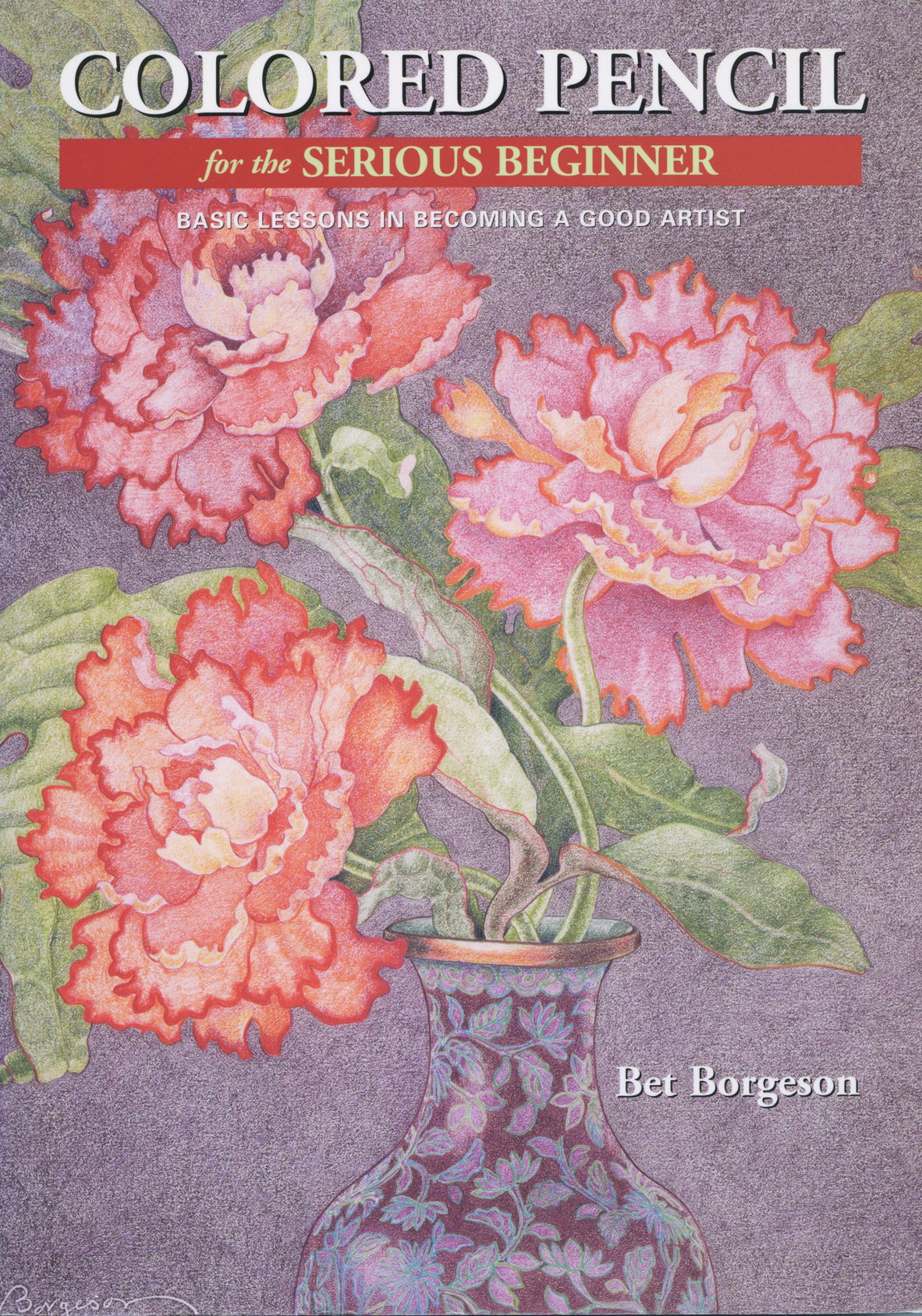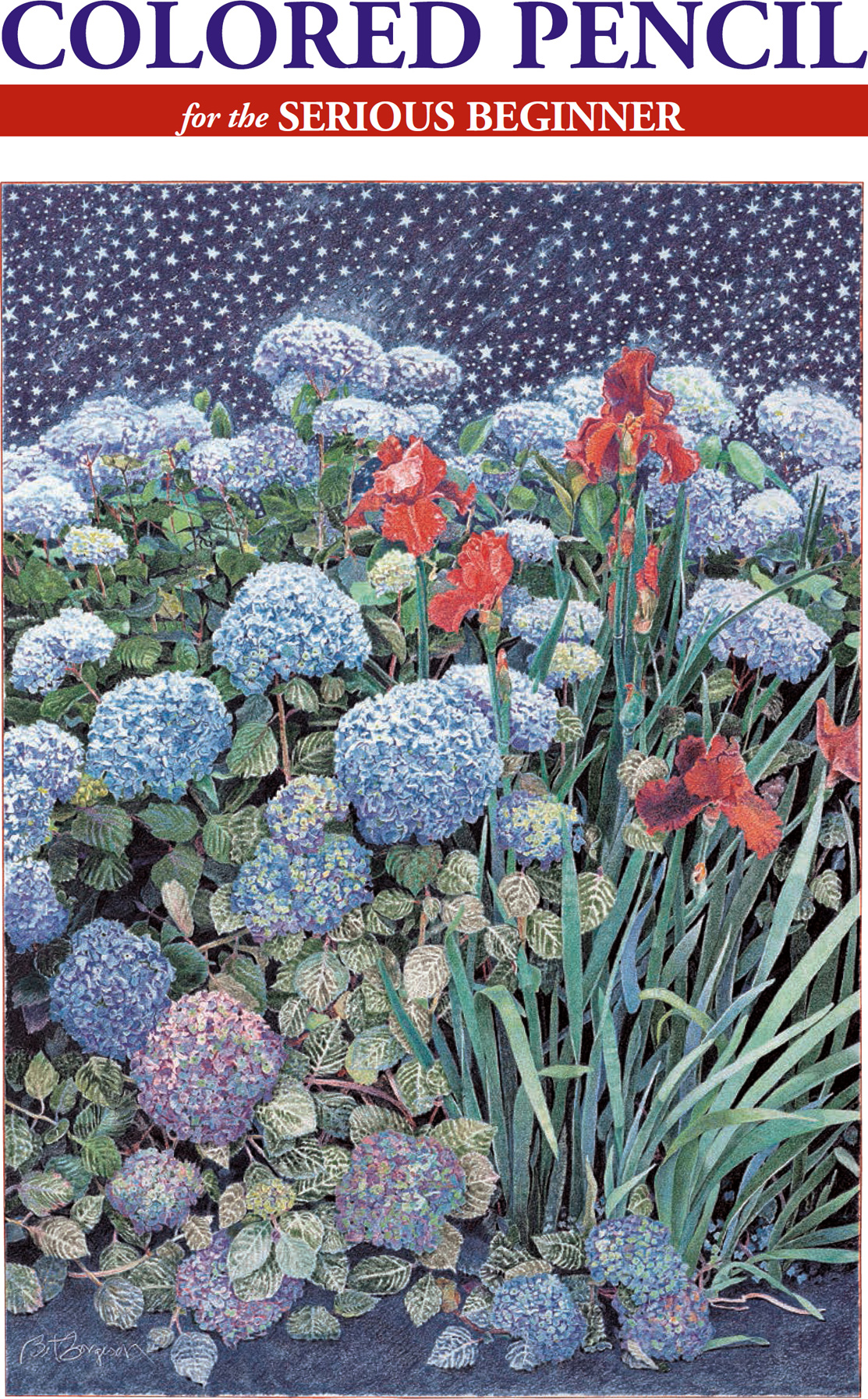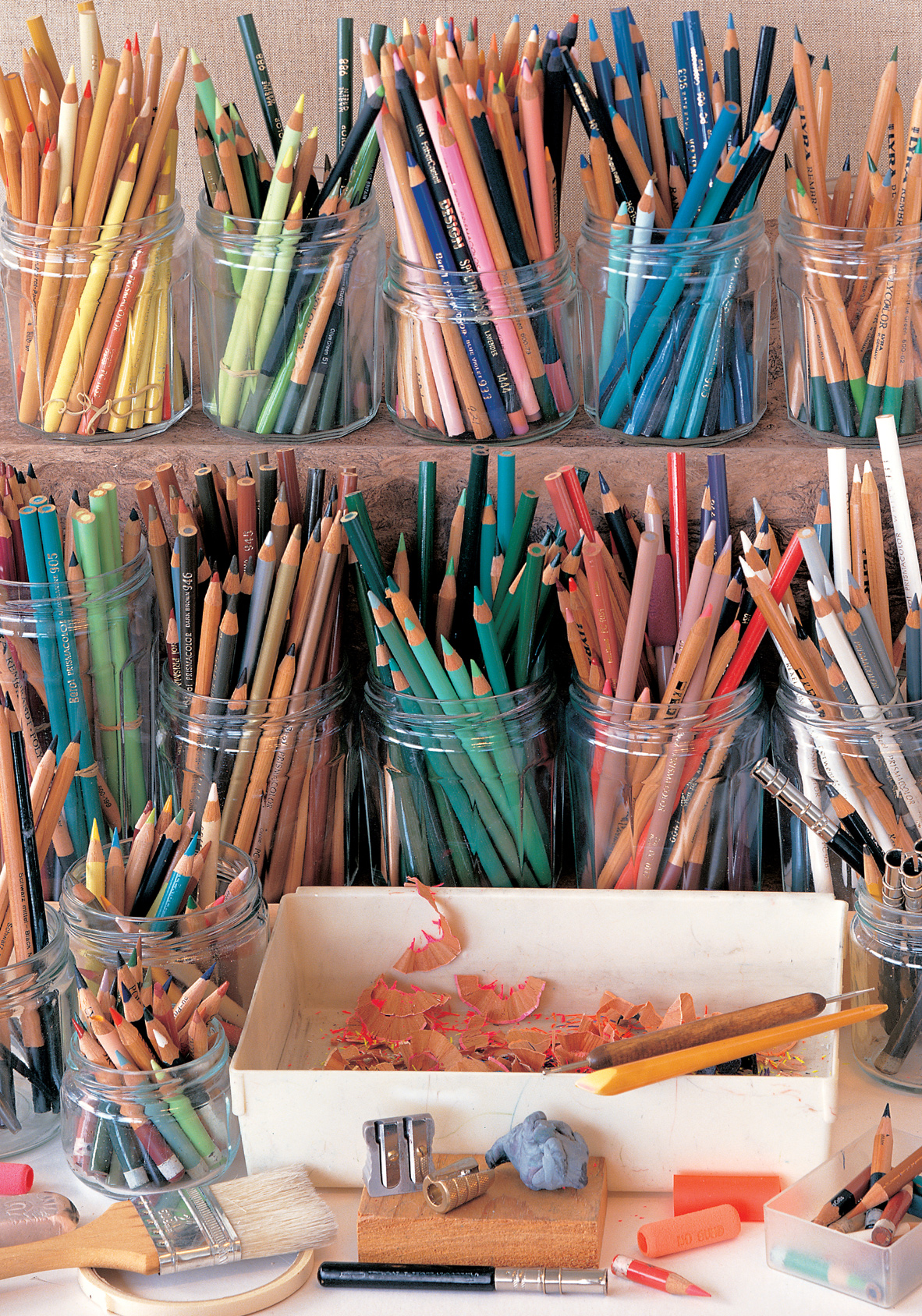Title page:
SHADED GOLD
Colored pencil on Rising Museum Board, 12 17" (31 43 cm). Collection of the artist.
THREE PEONIES IN PATTERNED VASE
Colored pencil on Strathmore Bristol Board, 16 13" (41 33 cm). Private collection.
NIKKOS AND STARDUST
Colored pencil on Rising Museum Board, 19 13 (48 34 cm). Collection of the artist.
Senior Editor: Candace Raney
Editor: Victoria Craven
Designer: Areta Buk
Production Manager: Ellen Greene
Text set in Adobe Garamond
Copyright 1998 Bet Borgeson
First published in 1998 in the United States by Watson-Guptill Publications a division of BPI Communications, Inc. 1515 Broadway, New York, NY 10036
Library of Congress Cataloging-in-Publication Data
Borgeson, Bet.
Colored pencil for the serious beginner : basic lessons in becoming a good artist / Bet Borgeson ; photography by Edwin Borgeson.
p. cm.
Includes index.
ISBN 0-8230-0761-8
1. Colored pencil drawingTechnique. I. Title.
NC892.B685 1998
741.24dc21 98-28204
CIP
All rights reserved. No part of this publication may be reproduced or used in any form or by any meansgraphic, electronic, or mechanical, including photocopying, recording, taping, or information storage and retrieval systemswithout written permission of the publisher.
ISBN9780823007615
eBook ISBN9780307832085
v4.1
a
Contents
THE PERCHERON AND THE RABBIT (DETAIL)
Colored Pencil on Rising Museum Board, 18 24" (47 61 cm). Collection of Washington State Arts Commission, Art in Public Places Program in partnership with Manitou Elementary School.
Introduction
As a serious beginner in art, or as a newly serious artist, you are now on a road that will likely lead you back to yourself. Art lies within us, not somewhere else. I hope this book will become a useful and frequent guide, and that you find in it much more than just technique. This book emphasizes information and philosophy about those large areas of art principles and tenets that come before technique and also after itwhere artworks true decisions are made and directions chosen.
After a brief look at tools and drawing materials, well begin with the fundamentals for creating illusions of form and space, and how special properties of color can reinforce this. Well also talk about composition, the ways in which it can be approached, and how you can work toward improving your sense of it.
Well build a working procedure that begins with how ideas are generated, encompasses various basic colored pencil techniques, and then goes on to outline methods for appraising your workwhile in progress and near its completion. With this and more information securely in place, well move on to the drawing of still life, floral, and landscape, with explanations of minimalistic, naturalistic, and imaginary approaches. In the step-by-step demonstrations well discuss the decision making and problem solving aspects. This because making art is not a pat or guaranteed thing, but is rather a fluid and dynamic processa visual record of choices made.
In this book, because it is aimed at the serious beginner, I have also included an afterword, with some specific ways of blending a life in art with the concerns of earning a livelihood.
It is important to me to have all my tools visible and within easy reach of my drawing board. Jars of various sizes are perfect for organizing pencils by color, length, and sometimes brands. I also have a revolving caddy on a shelf under my taborets tabletop for materials that are less used.
CHAPTER 1
Materials
The tools in any art medium contain characteristics and idiosyncrasies of their own. They have a weight and a feel about them. As any regular user of tools knows, the right tool can seem like an almost magical extension of mind and hand. The wrong tool can seem antagonisticeven angry. When you begin to work at art, you enter into a partnership with all of your materials. It is important that they be friendly to your efforts, and that as you use them they allow your mind to be open, active, and unencumbered by any resistance from them.
In the materials of the colored pencil medium are described, as are some of my opinions about them. An example of this is discussion about the merits of a handheld sharpener versus an electric sharpener. For even the seemingly simple task of sharpening pencils (no small thing with this medium) can be frustrating and time wasting if the tool chosen is the wrong one for you. So it is with paper and even the nature of the pencils themselves. This first chapter is offered in the hope of helping sort out such issues, and of guiding you in the selection of your materials. It also includes a frank discussion of workspacesof how simple a space is truly needed, and what kind of studio lighting works best when working with colored pencils.
The Pencils
Colored pencils now come in a multitude of brandsdomestic and foreignand vary widely in such characteristics as softness, strength of color, and manufacturers quality control. Generally, however, all colored pencils can be divided into two basic categories: water-soluble and non-water-soluble.
Non-water-soluble pencils are wax- or oil-based, and are considered the more lightfast, or resistant to fading, of the two. Water-soluble pencils appear more like watercolor when used with water and a brush. In actual use, however, both kinds of pencil are easily compatible with each other. And most all brands of true colored pencils can be successfully blended and used together.







